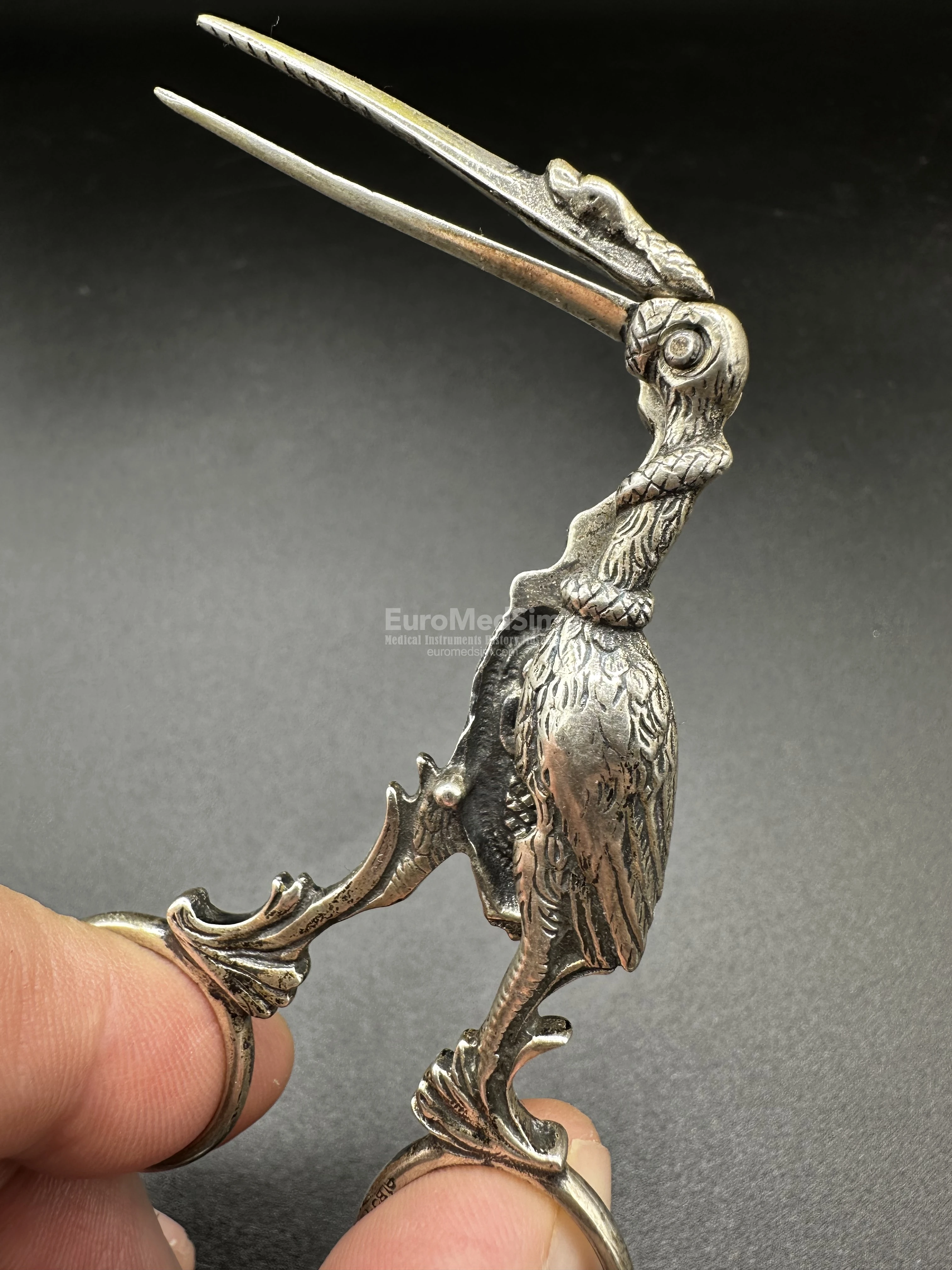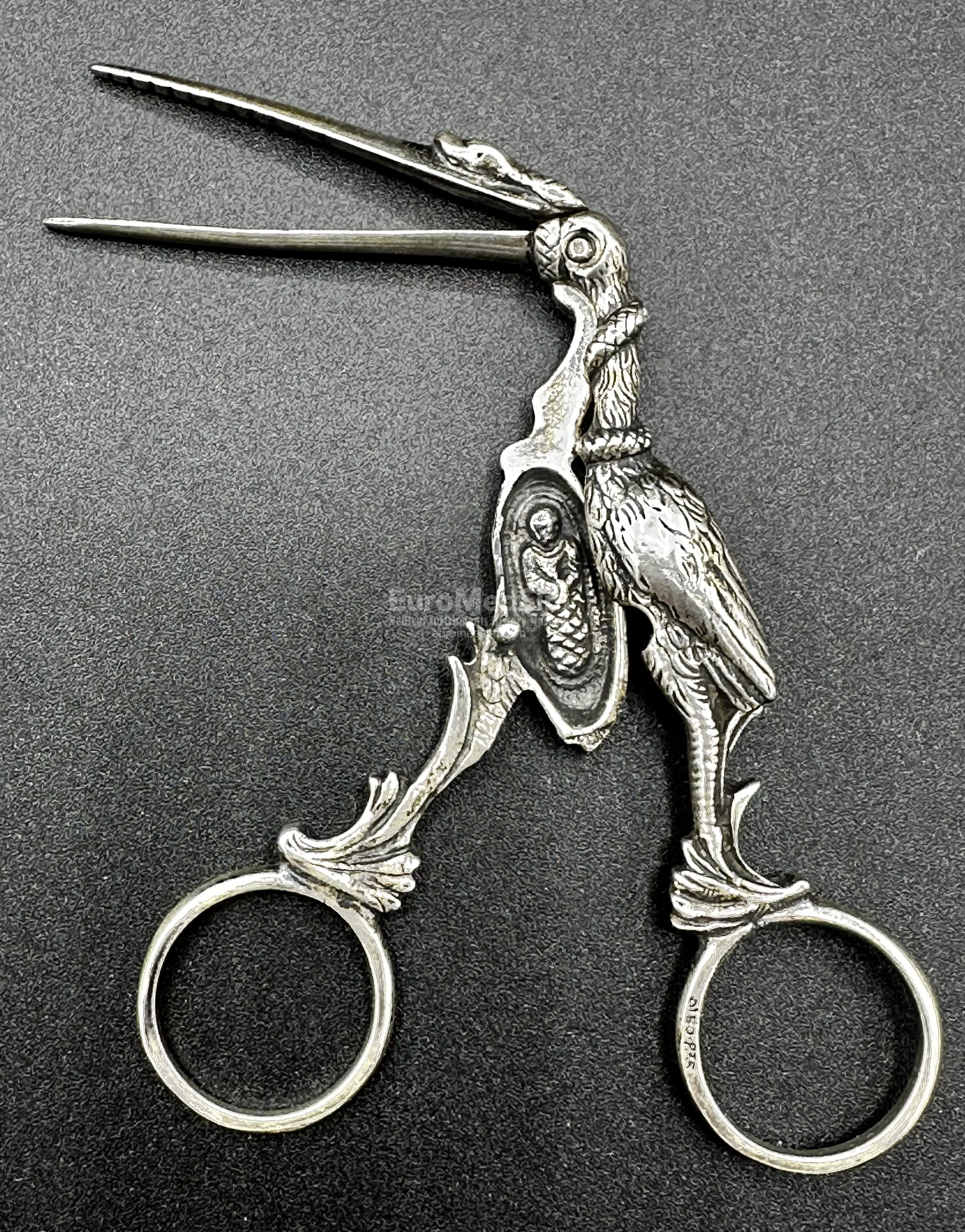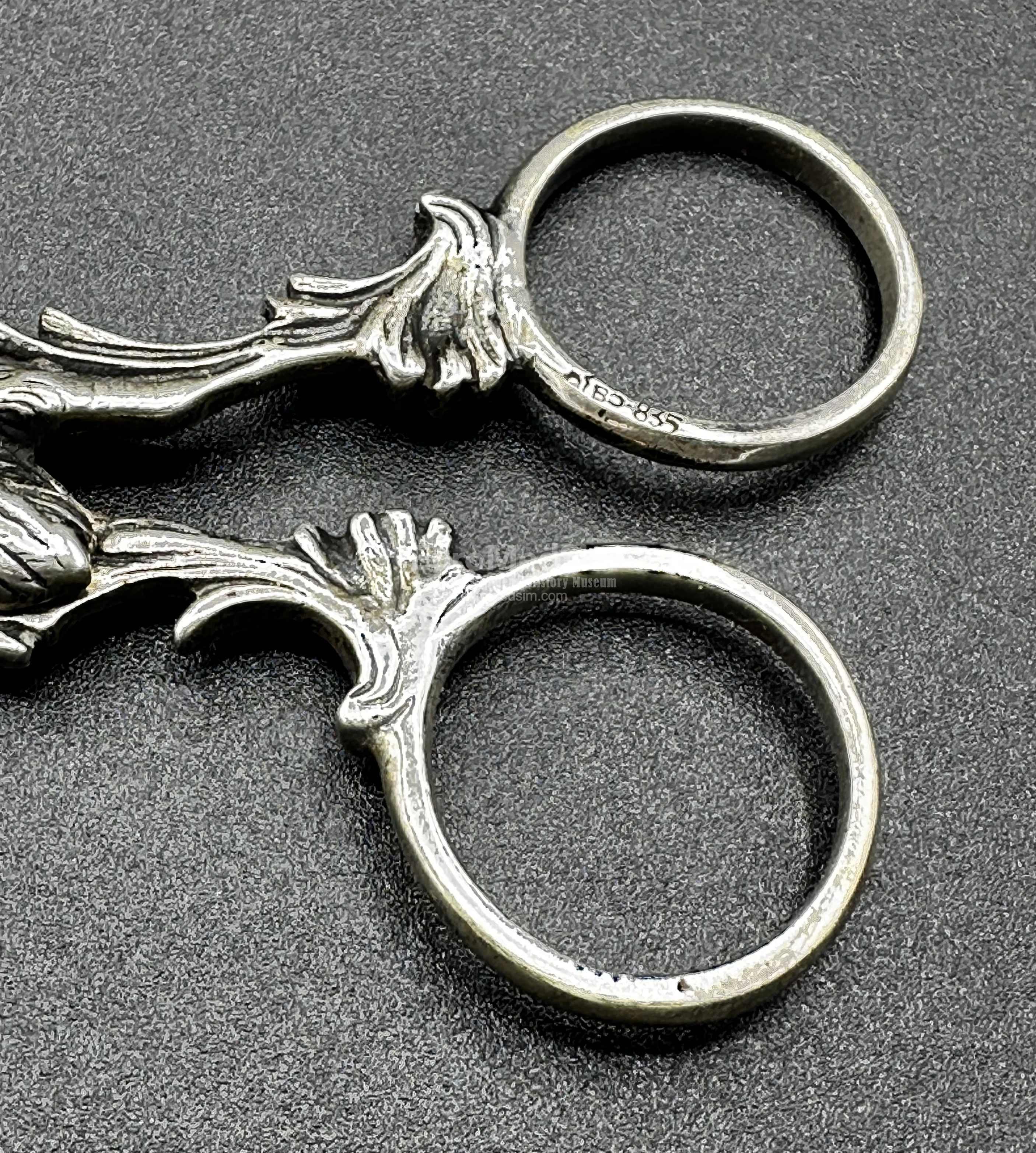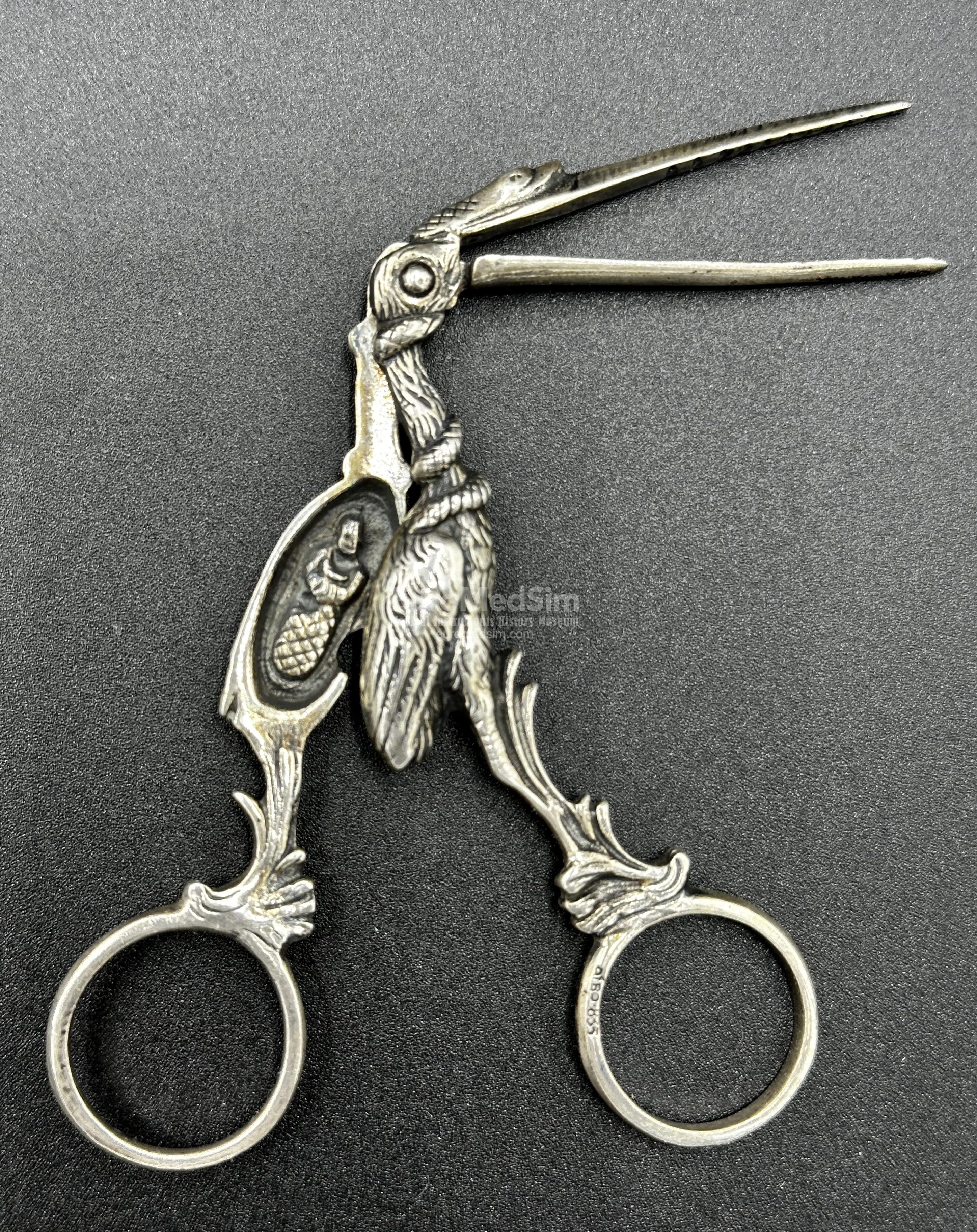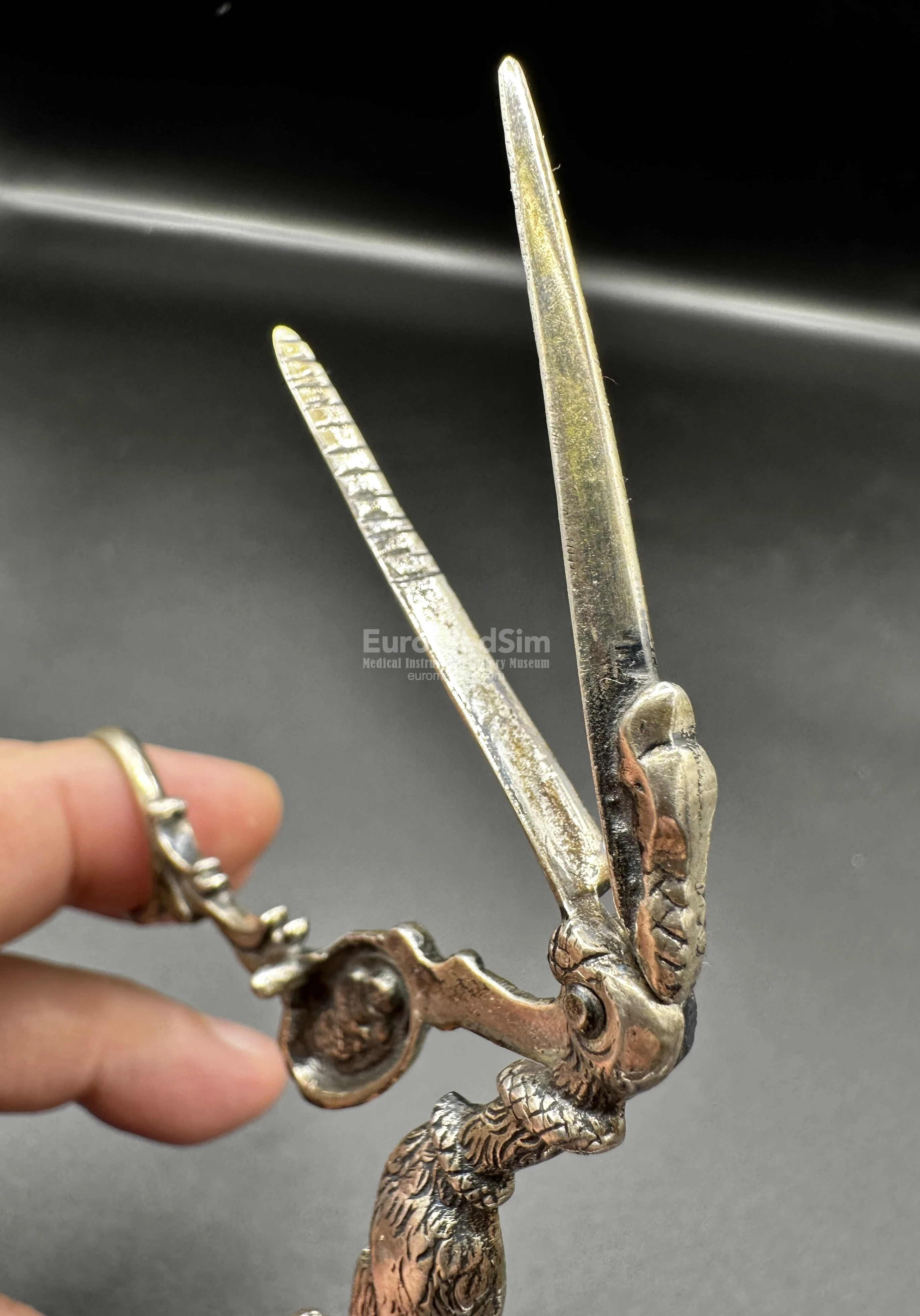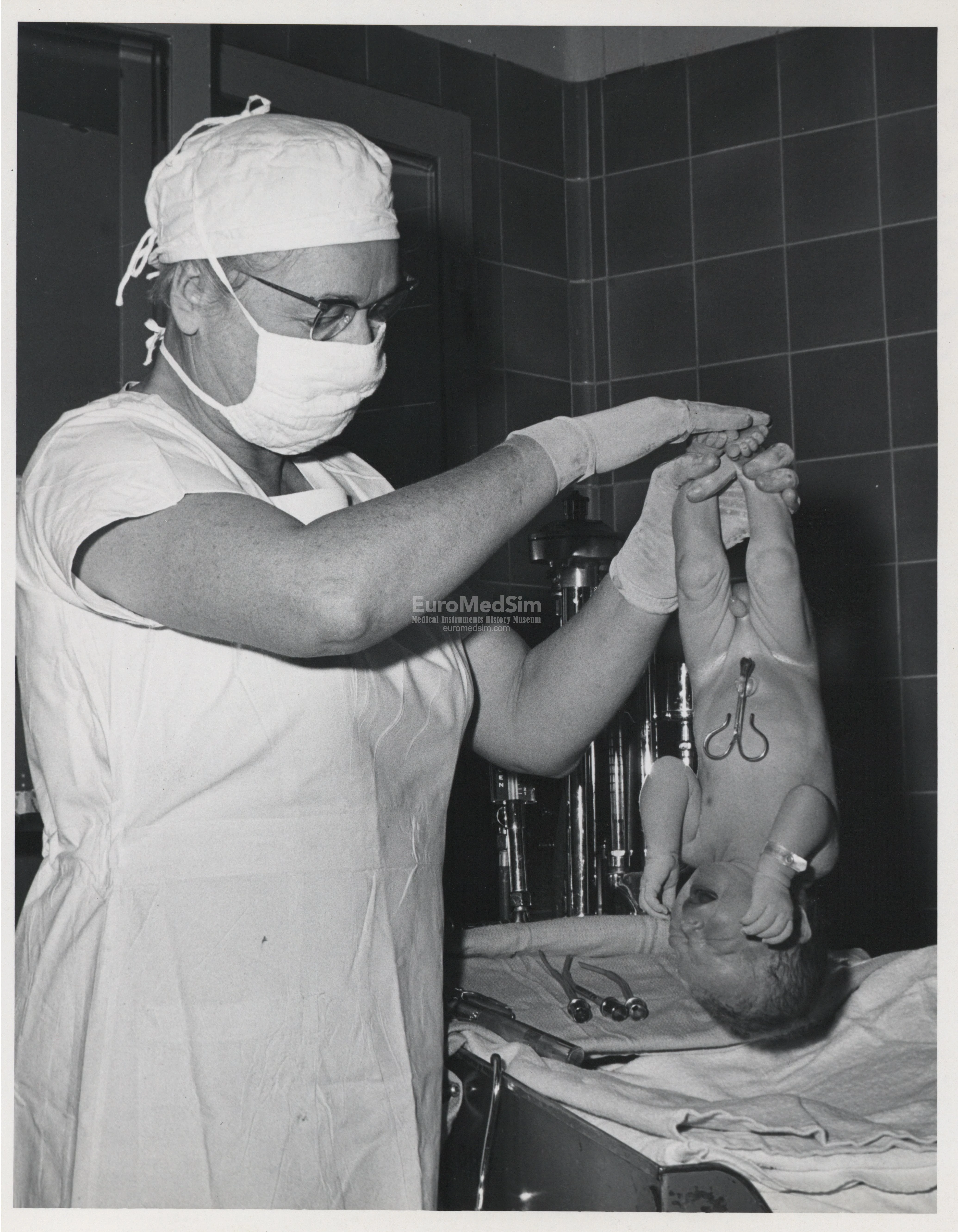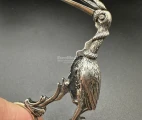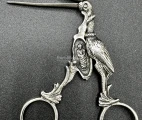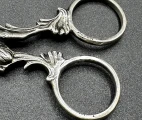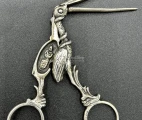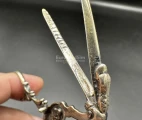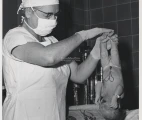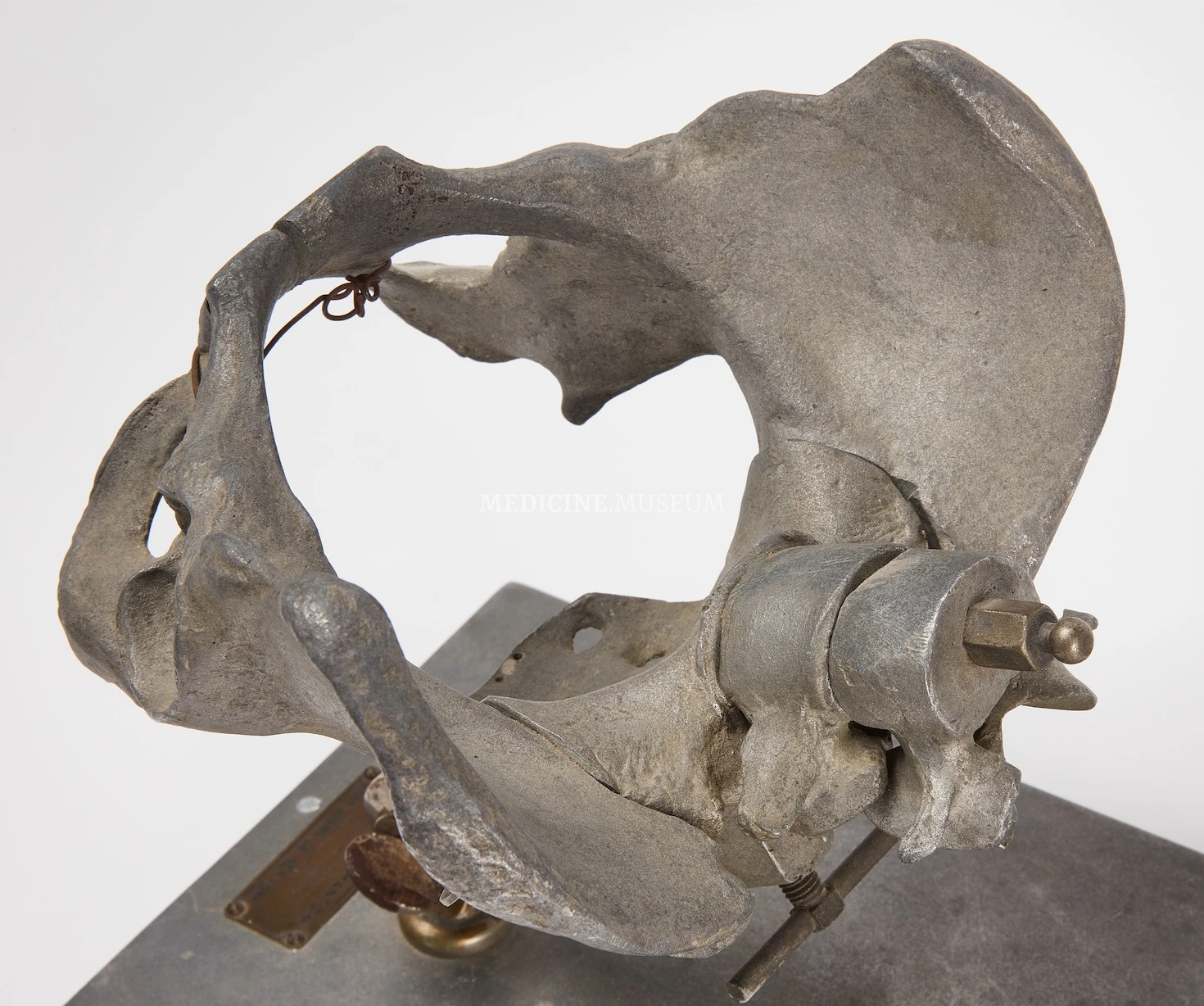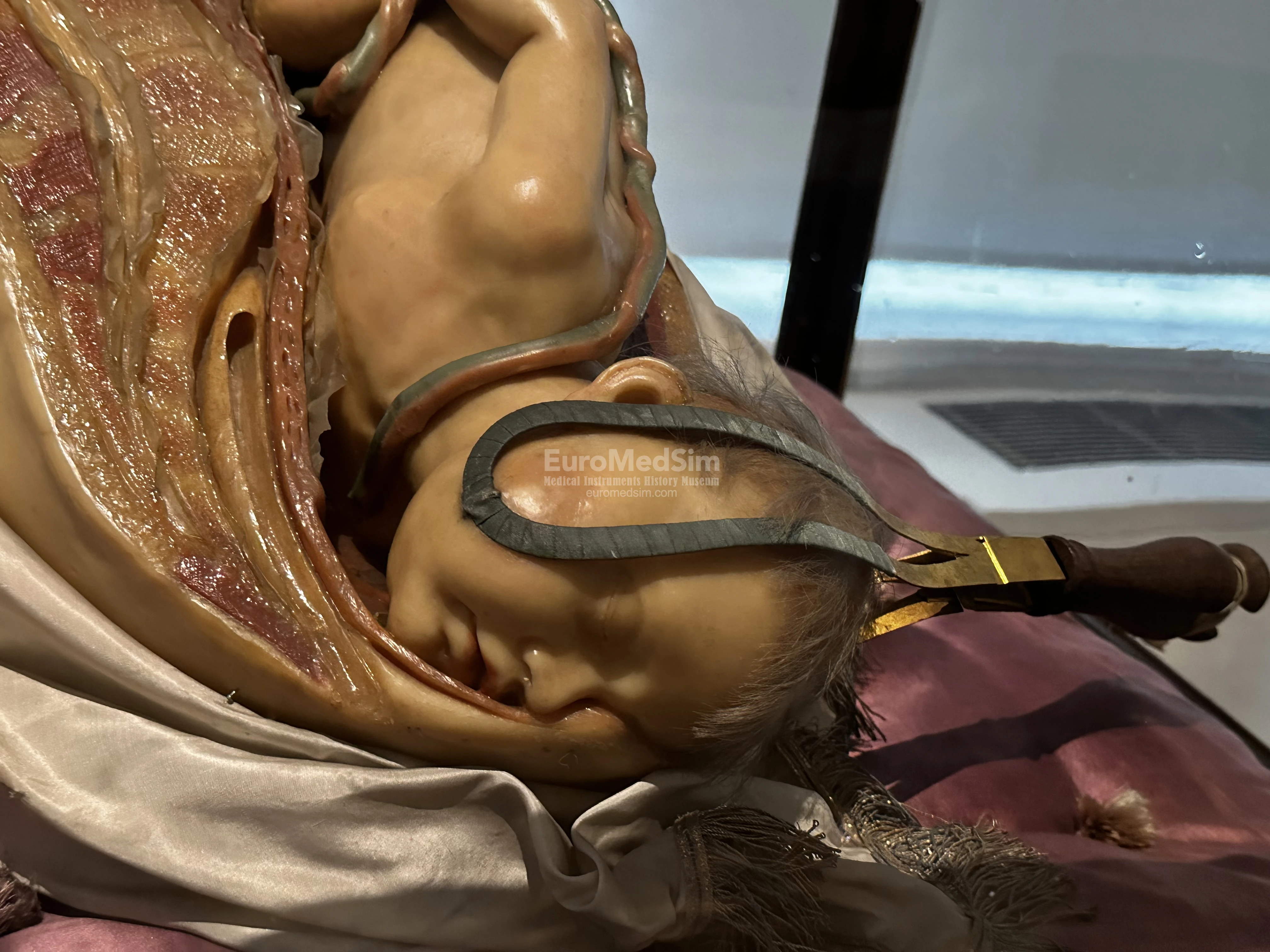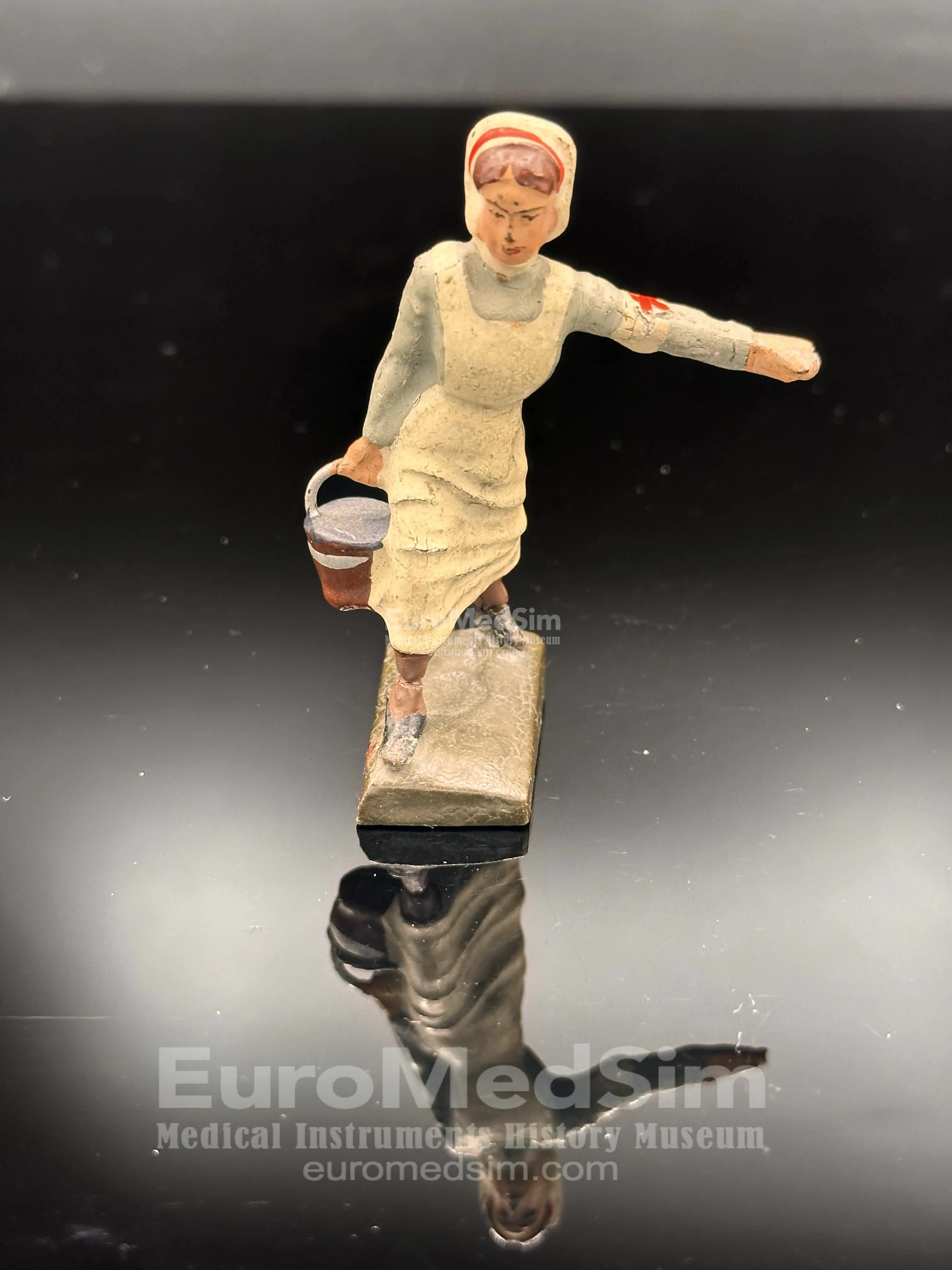Midwifery Silver Stork Clamp for Umbilical Cord
Object description
A umbilical cord clamp (German: Nabelklemme) in the shape of a stork made of 835 silver. Inside the stork, the symbol of motherhood, is a swaddled baby, which becomes visible when the jaws are opened. The figure of a swaddled baby (German: Fatschenkind, from fatschen – swaddle) is a traditional depiction of the infant Jesus, common in Southern Germany and Austria. Such figurines depict the infant Jesus wrapped tightly in swaddling clothes, symbolizing his birth and humanity, were used in Christmas traditions and served as objects of domestic worship.
Around the neck of the stork there is a snake coiling it like around the rod of Aesculapius. The head of the snake rests on top of the beak. The jaws of the clamp are slightly concave, so that when closed there is a gap between them. The inner surfaces of the branches have sparse transverse notches.
The ring of the stork's “hind” leg bears the uncertainly readable marking “GIBO(?) 835” or “GFBO 835” on both sides. The letters are most likely a silversmith's mark. The number “835” indicates that the instrument is made of 83.5% silver, a common silver standard in Germany, the Netherlands and other European countries.
Condition report
Overall in good condition. Measurements: 87x43x9 mm. In closed position, the clamp has less than 9 cm height. The width depends on the points between one measures, so import is the grasping size which is 43 mm – between the tip and junction of the clamp jaws.
Provenance
Property from South German family rarities. Acquired from the above, through Auctionhaus Franke, Nuremberg, Germany, in 2024.
Reference Information
Immediately after birth, in the first minutes of the postpartum period for the smooth continuation of the advancing process of labor is important to clamp the umbilical cord, stopping the blood supply from the placenta, interrupting the physical connection of the baby and the mother. The umbilical cord and the proper timing of cord clamping has been a subject of interest and debate throughout human history. The first cord clamp was proposed in the 18th century and its use became popular in the early 19th century.
Before that, the umbilical cord was simply tied, using materials such as handkerchiefs and fabric fragments. The use of a simple thread for this purpose was not recommended, as very soft and delicate it can be simply cut with a thread. Before clamps were invented, midwives cut the umbilical cord with ordinary scissors and knotted it beforehand, or used other materials such as a bundle of maternal hair, a soft strand of yarn (French: fil ciré), or a linen ribbon. The first clamps, transmitting the umbilical cord, did not have ratchet (French: crémaillère, rack-and-pinion mechanism) fixing jaws in closed position. So, without such fixation element the handles could be tied together with a thin thread to fix the clamps in a closed state.
Sometimes three-toed stork legs, three oak leaves (a symbol of strength and endurance), lizards (rebirth), frogs (prosperity) or turtles (longevity) were added to the rings from below, which allowed the instrument to be placed vertically on the surface like a sculpture.
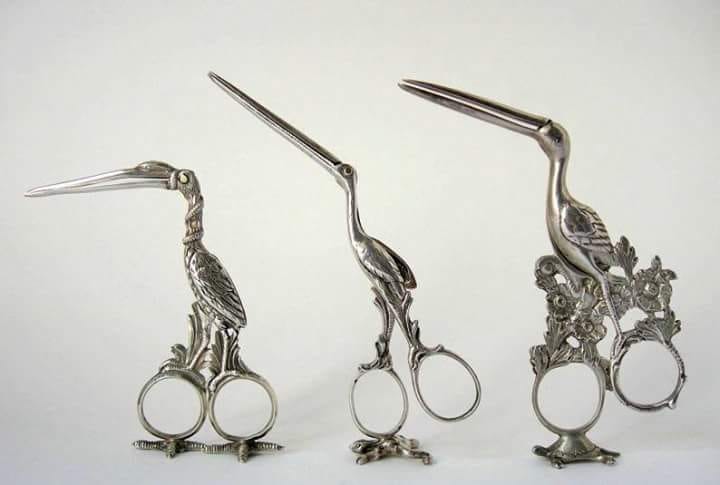
Due to additional elements like toes, lizards, or turtles the instruments could be placed vertically on bed-side table as a decoration, a gift for a young mother or a hint about an soon expected addition to the family. Source: mimatrona.cl
Since a piece fitted with decorative stands is inconvenient in a practical sense, the versions that their function lay apart from their use in childbirth seems very plausible. In this case, it may not have been a medical instrument, but rather a gift to the mother on the occasion of the birth of a child, to congratulate her on the addition of a child and to bring her and the child good luck. Another explanation tells that such a figurine was placed in a prominent place in the living room in wealthy families to let the house guests be informed that a birth of a child is expecting, without saying it out loud and protecting the newborn baby from the evil eye.
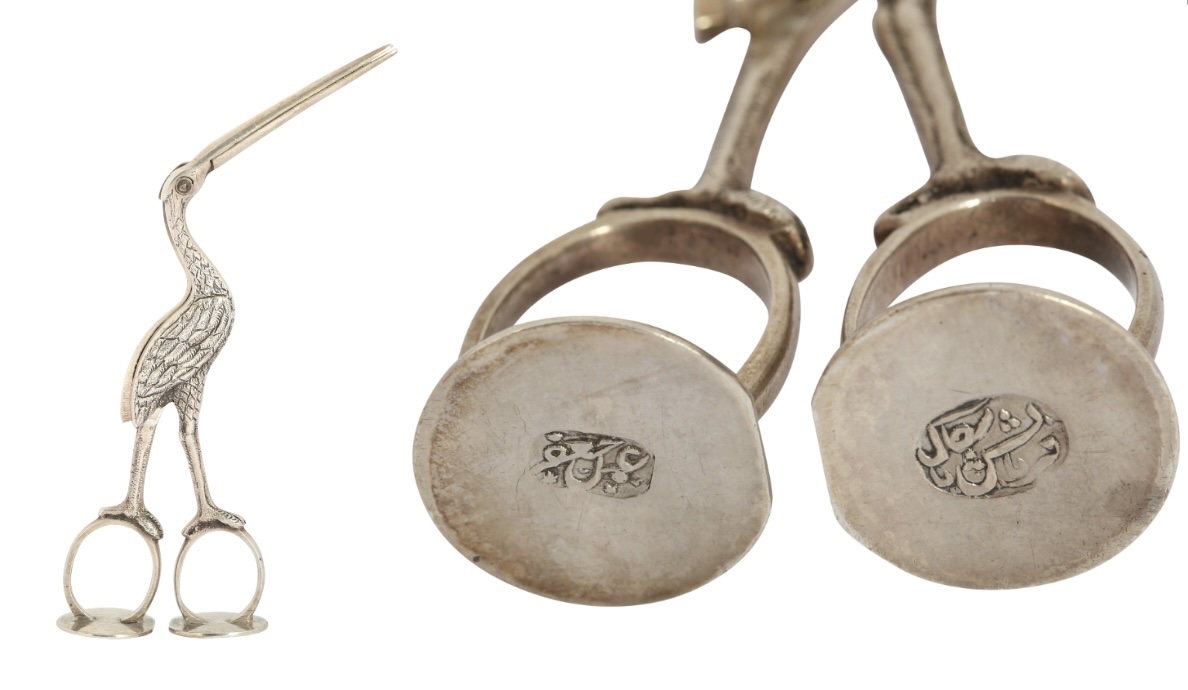
Silver stork clamp made in Isfahan, Iran, late Qajar dinasty (19th century). The two oval bases are engraved in Arabic script - one with 'Amal-e Ja'far ('made by Ja'far', famous Persian silversmith named Amali Ja'far), and the second, 'Farmayesh-e Pascal' ('commissioned by Pascal') - indicating a French customer named Pascal, possibly a merchant or physician. Source: chiswickauctions.co.uk
Whatever their purpose – clamping umbilicus or entertaining a young mother, these silver artifacts (mostly of European origin) are particularly prized and sought after by collectors.
Remark 1
The French word crémaillère traces its roots to the Latin cramaculus, which derived from the Ancient Greek κρεμαστήρ (kremastḗr), meaning "hanger." This etymology reflects the original use of crémaillère to describe a trammel hook used for suspending pots over a fire.
Remark 2
Often such instruments are mistakenly called 'umbilical scissors' – this description frequently found on the Internet is incorrect, because the clamp has no cutting surfaces and real umbilical scissors look differently. Also, sometime umbilical cord clamps are depicted in the literature, which on closer inspection turn out to be sugar tongs.
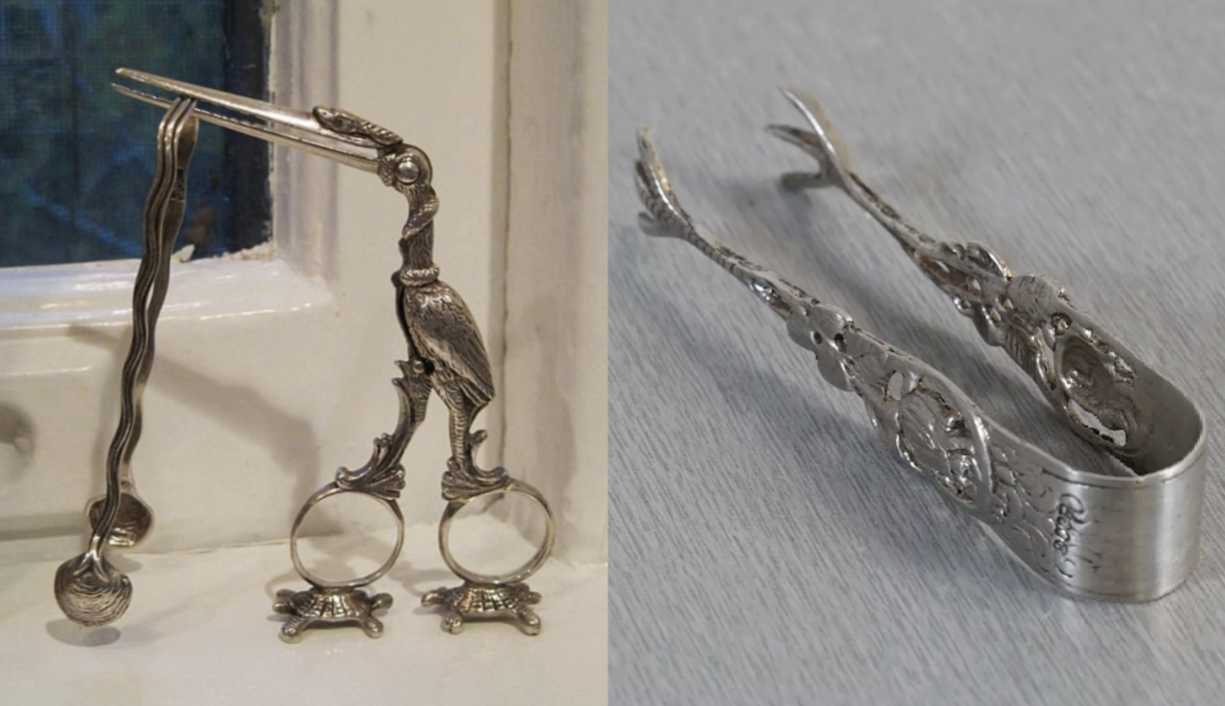
Samples of sugar tongs – on the left the tongs are hold by stork, on the right – they have toes of the stork/bird.
